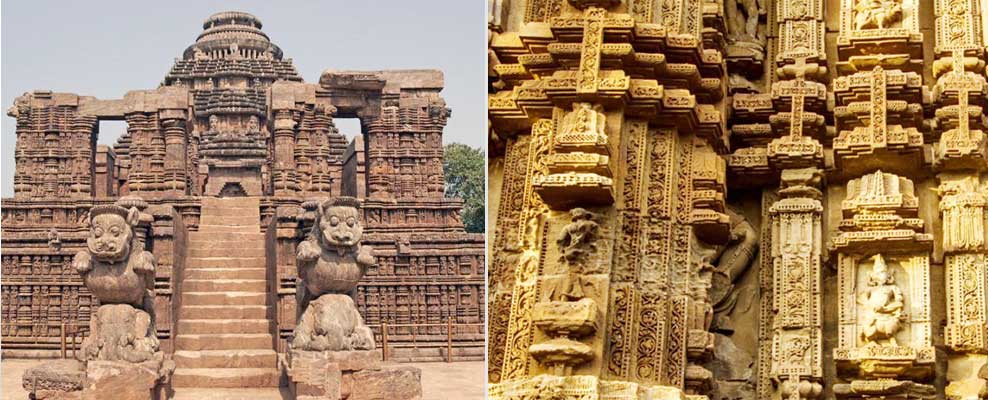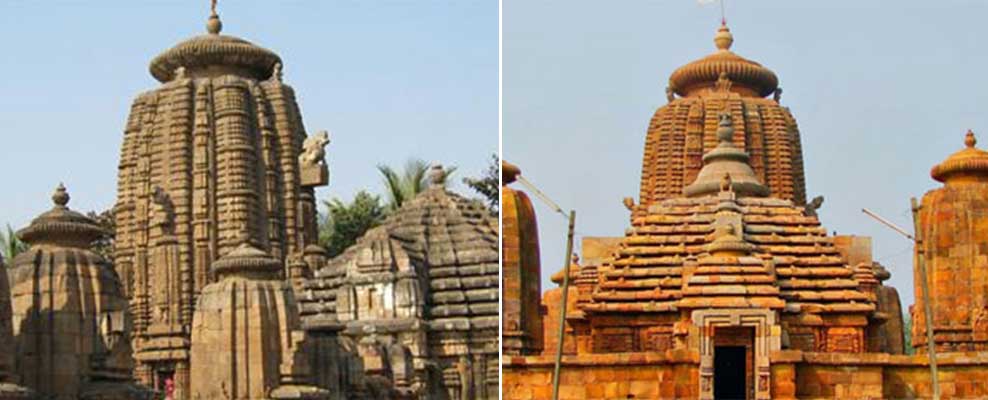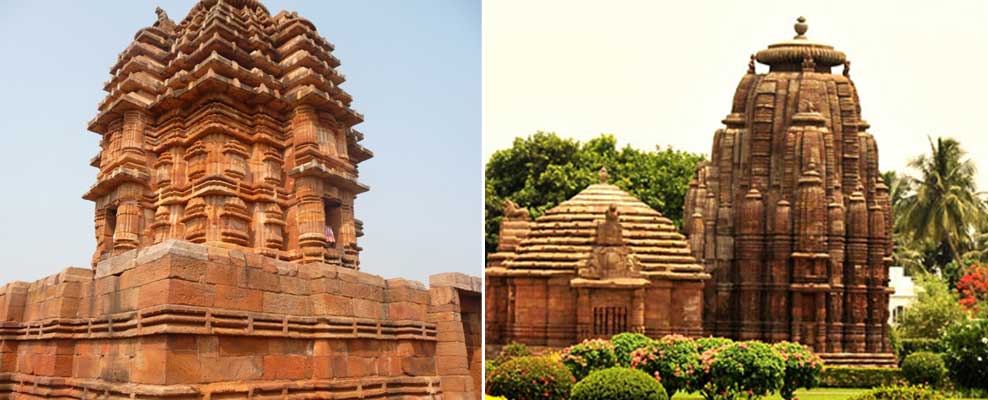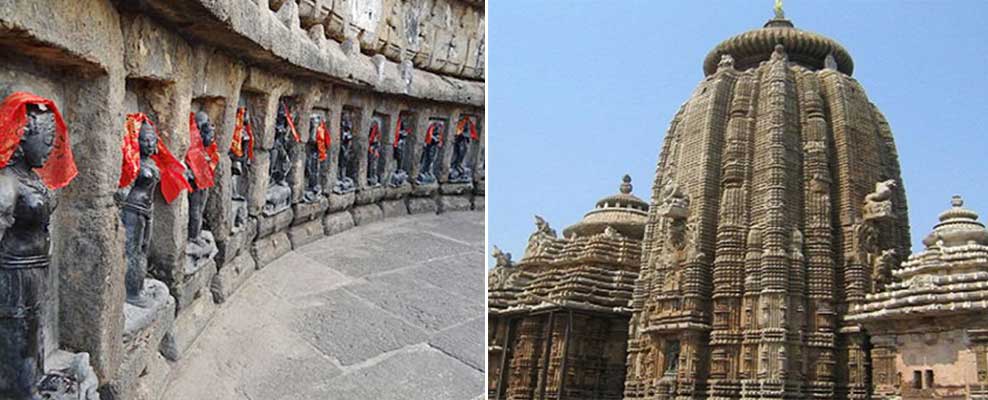Bhubaneswar, the current capital of Odisha and the Temple City of India, has played an important role in the rise of an ancient civilization. Though the formal city of Bhubaneswar was established in 1948, its history predates the 7th century BC. Epigraphical and mythological references call the city as Saiva Pitha and Ekamra Kshetra.
Between the 7th and the 12th century, several thousand sandstone temples were erected across the length and breadth of the city, earning the city the title of “The City of Temples”. Further, the rule of the Gangas saw the emergence of Vaishnavism and brought about a harmonious symphony in its culture and architecture. Temples previous to this period were all Saiva architecture, dedicated to Lord Shiva.
Bhubaneswar is popularly recalled across the country as the seat of the Great Kalinga War. This is the place that turned Emperor Asoka to take up Buddhism and give up violence to follow the path of truth and peace.

Kalinga Temple Architecture – Bhubaneswar was named after Lord Tribhubaneshwar or the “Lord of the Three Worlds” – Prithvi, Yamlok, and Swarglok (earth, hell, and heaven). The city still preserves more than 500 of the country’s finest temples, in spite of being invaded several times by the Mughals and the British. Lack of maintenance has taken the toll in several others, but the sites are still existent in its original form. The oldest temples (currently existent in its true shape) in Bhubaneswar predate the 6th century and include Satrughaneshwara Temple and Bhareteshwar Temple, both built during the rule of Sailoidbhava.
Along with Puri and Konark, Bhubaneswar forms a part of the Golden Triangle and is among the most visited religious sites in Eastern India. Puri, just 60 km from Bhubaneswar is also among the 7 top pilgrimage sites in the country. Some of the important temples that you shouldn’t miss include:

Lingaraj Temple – Dedicated to Lord Shiva, the Lingaraj Temple was built in the 11th century AD and also marks the evolution of modern temple architecture in Kalinga (Odisha). Just the spire of the temple measures an astounding 180 feet and spread across the main temple complex are 64 smaller shrines dedicated to all kinds of gods and goddesses.

Brahmeswar Temple – A 10th century AD temple, Brahmeswar is among the smallest but nonetheless gorgeous examples of early Kalinga architecture. The temple is popular among tourist for the extravagant stone archway and the exquisitely decorated ceiling on the temple porch. Several carved images and motifs appear in the architecture, the first of its kind. Brahmeswar literally stands for “the Lord who offers Freedom through yoga”. Consequently, you will find several motifs of meditation poses along with figurines from the Panchatantra (an ancient fable), Jain munis (nuns/monks) and Hindu mythology.
Bhaskareswar Temple – Another 11th-century temple, Bhaskareswar is located a kilometer east to the Lingaraj Temple and is dedicated to Lord Bhaskareswar (Lord Shiva). Standing 60 feet tall, this is the first time that iron beams were used in temple architecture in Odisha. Another first for the Bhaskareswar temple is the motifs of dancers and musicians on the temple walls. The Bhaskareswar temple has design similarities with the Mukteshwar Temple and also features exotic carvings of damsels and erotic poses. Further, one can see a lot of animals being depicted in the temple premises.
Rajarani Temple – Built around the 10th century AD, the Rajarani Temple is unique as it doesn’t associate with any kind of deity. Legends speak of the temple being the pleasure resort for Odia kings and queens and thus the name Rajarani. Other experts, however, believe that the name Rajarani comes from the unique variety of sandstone it has been made with. Several exotic sculptures in the temple premises have led it to be called the Khajuraho of the East.

64 Yogini Temple – The tantric goddess at Chausath Jogini Temple, Hirapur – Built on the outskirts of Bhubaneswar, this is among the few temples across the country that is dedicated to the esoteric tantric cult. In fact, this yogini temple is one of the four of its kind in India and as obvious, several mysteries have been woven around it. The temple architecture has 64 yoginis (tantric goddesses) carved inside the walls. The goddesses are believed to drink the blood of demons and protect the worshippers. The temple doesn’t have a ceiling as it is believed that the goddesses would fly out in the night. Tantric rituals involving the sacrifice of animals and humans have ceased to exist in modern times but the fear is still persistent.
Ananta Vasudeva Temple – Dedicated to Lord Krishna and Vaishnavism, the Ananta Vasudeva is 13th-century architecture and is one of few temples in the country to feature Lord Brahma in its motifs. The interesting sculptures in the temple include a seven hooded serpent and Lord Krishna holding his conch, chakra, and mace. The temple was built during the reign of King Bhanudeva.
While these are the most popular temples visited in Bhubaneswar, each of the odd 500/600 temples holds something unique in its architecture and mythology. There would certainly be no other place in the world that dedicates itself to the worship of its deities as Bhubaneswar has. Tens of thousands of people come to Bhubaneshwar every year to get to Puri, one of the four important religious sites (dhams) in India and the Konark Sun Temple. However, do make some time out to stroll amidst the ruins right in the center of the capital.
Also visit: http://madhumaymallik.com/2017/12/10/temple-city-bhubaneshwar/ [1]
Photo credits: Banner Left – Bhubaneshwar Tourism; Banner Center − Trip Savvy; Banner Right – Top Yaps
